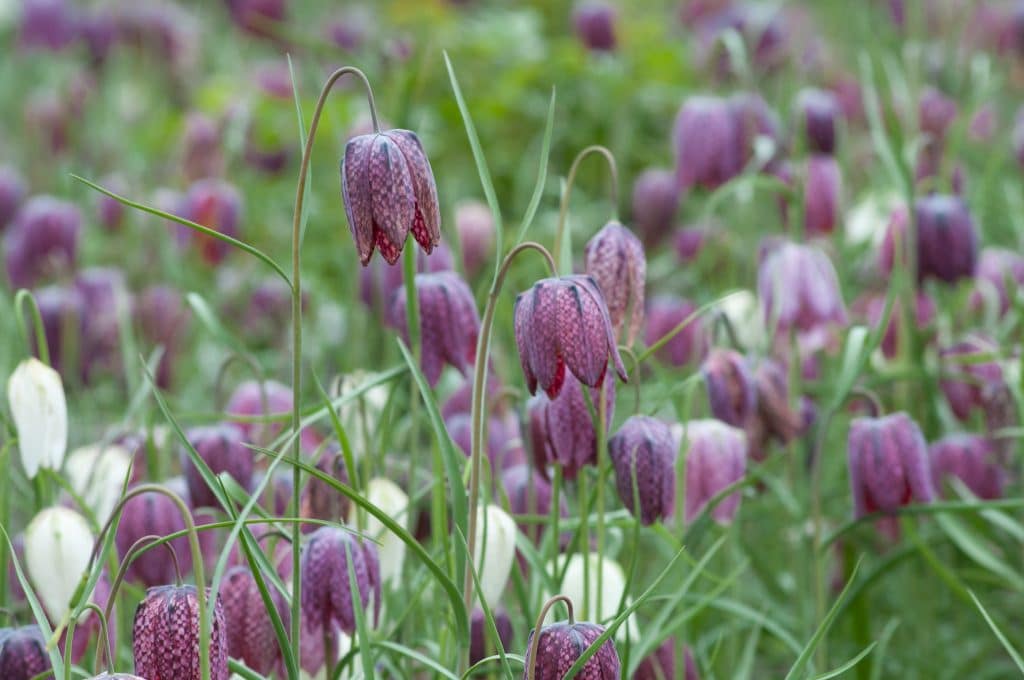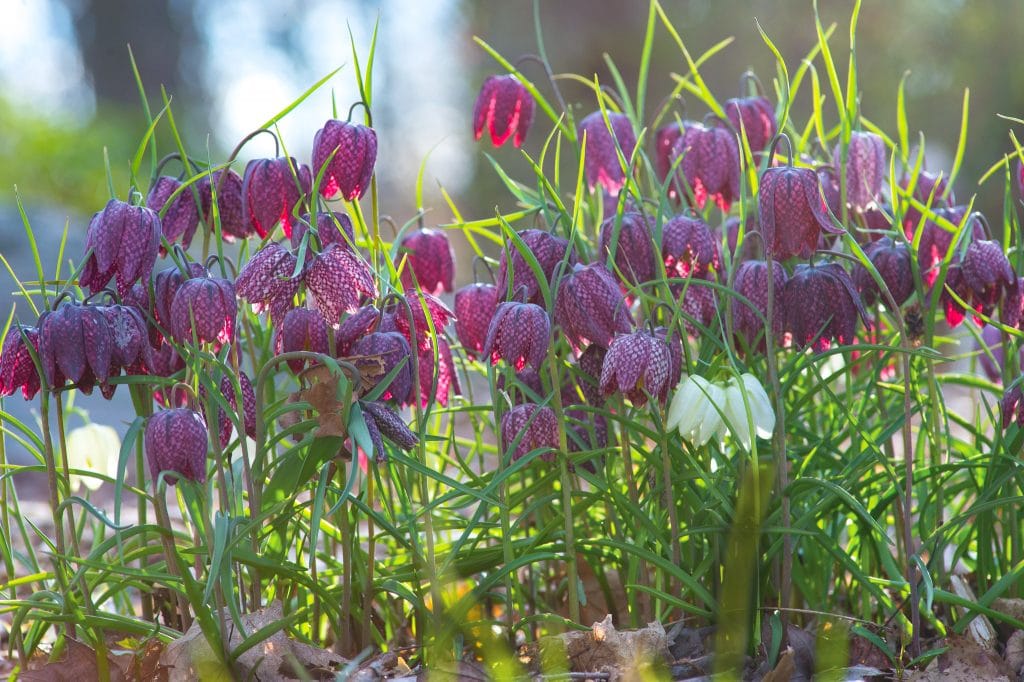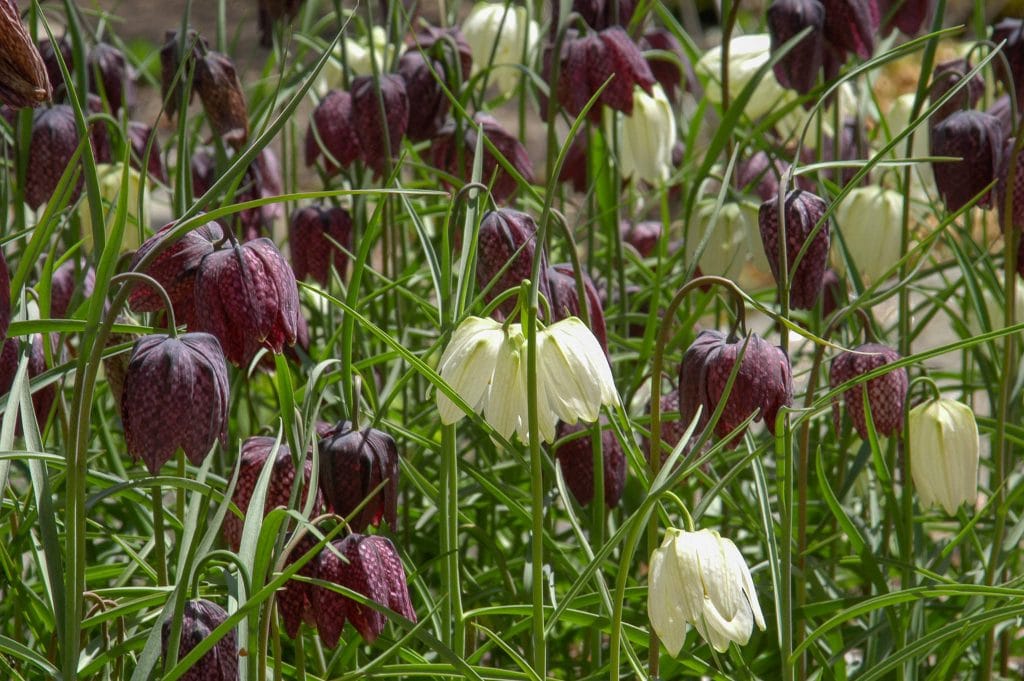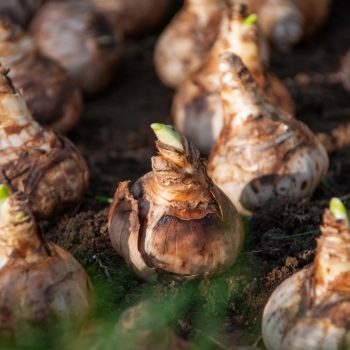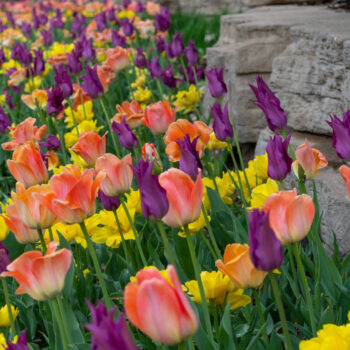Snake’s Head Fritillaria
Fritillaria meleagris
Specifications
Pointed buds open to maroon (occasionally white), bell-shaped blooms. Snake’s Head looks like a wildflower and is best used as such — in a meadow, under trees, around shrubs. Happiest in part shade and evenly moist soil.
Deer Resistant
Note: Snake’s Head is resistant to deer, but rodents such as voles and gophers may eat the bulbs.
End of Season Savings
The prices shown here are 20% off our 2024 catalog prices.
| Item # | 6039 |
| Height | 10—12 inches |
| Sunlight | Part (3-4 hours sun per day) |
| Soil | Evenly moist |
| Flower Color | Maroon and White |
| Bulb Size |
6cm+ ?
Bulb size is determined by the circumference around the largest part of the bulb. Colorblends only delivers top size bulbs. Large bulbs produce more or larger flowers than small bulbs.
|
| USDA Zones |
4a—7b ?
Hardy in USDA zones 4a to 7b in the South or 9b on the West Coast. Prechill in zones 7b and warmer in the South, Southwest, and California.
|
| Bloom Time | Early-Mid |
- early
- mid
- late
Delivery & Planting Times
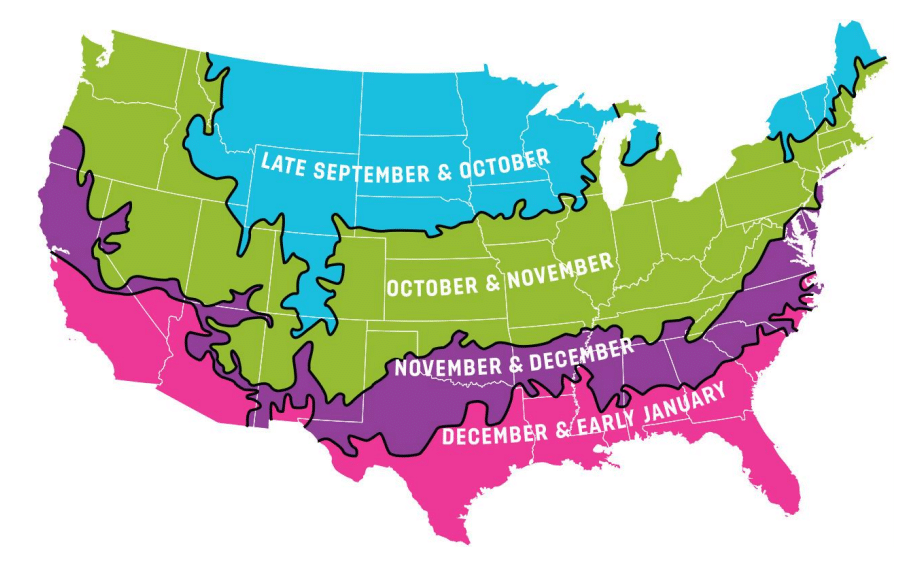
Spring-flowering bulbs must be planted in the fall. They need cool soil to make roots before the onset of winter. Cool fall weather arrives at different times from north to south and from high elevations to low.
Please note that the temperature of the soil lags behind the air temperature. You can generally plant later than the windows provided in this map. As long as the ground is not frozen, you can still plant.
Snake’s Head Fritillaria
Fritillaria meleagris
Pointed buds open to maroon (occasionally white), bell-shaped blooms. Snake’s Head looks like a wildflower and is best used as such — in a meadow, under trees, around shrubs. Happiest in part shade and evenly moist soil.
Deer Resistant
Note: Snake’s Head is resistant to deer, but rodents such as voles and gophers may eat the bulbs.
End of Season Savings
The prices shown here are 20% off our 2024 catalog prices.
| Item # | 6039 |
| Height | 10—12 inches |
| Sunlight | Part (3-4 hours sun per day) |
| Soil | Evenly moist |
| Flower Color | Maroon and White |
| Bulb Size |
6cm+ ?
Bulb size is determined by the circumference around the largest part of the bulb. Colorblends only delivers top size bulbs. Large bulbs produce more or larger flowers than small bulbs.
|
| USDA Zones |
4a—7b ?
Hardy in USDA zones 4a to 7b in the South or 9b on the West Coast. Prechill in zones 7b and warmer in the South, Southwest, and California.
|
| Bloom Time | Early-Mid |
- early
- mid
- late
Bulb Calculator
To find the number of bulbs you need, enter the square footage of the planting area in the box below.
Area
Square Feet
Density
Bulbs/sq. ft.
Bulbs Needed
When to Plant

Spring-flowering bulbs must be planted in the fall. They need cool soil to make roots before the onset of winter. Cool fall weather arrives at different times from north to south and from high elevations to low.
Please note that the temperature of the soil lags behind the air temperature. You can generally plant later than the windows provided in this map. As long as the ground is not frozen, you can still plant.
Planting Instructions
Best in partial shade (will tolerate full sun in northern regions) and evenly moist soil. This fritillaria can be planted in rough grassy areas, where it looks very natural. Just be sure you wait to mow until the foliage has yellowed.
| Depth of Planting Hole | 4 inches |
| Spacing | 3 inches apart |
Planting Instructions
Best in partial shade (will tolerate full sun in northern regions) and evenly moist soil. This fritillaria can be planted in rough grassy areas, where it looks very natural. Just be sure you wait to mow until the foliage has yellowed.
| Depth of Planting Hole | 4 inches |
| Spacing | 3 inches apart |



